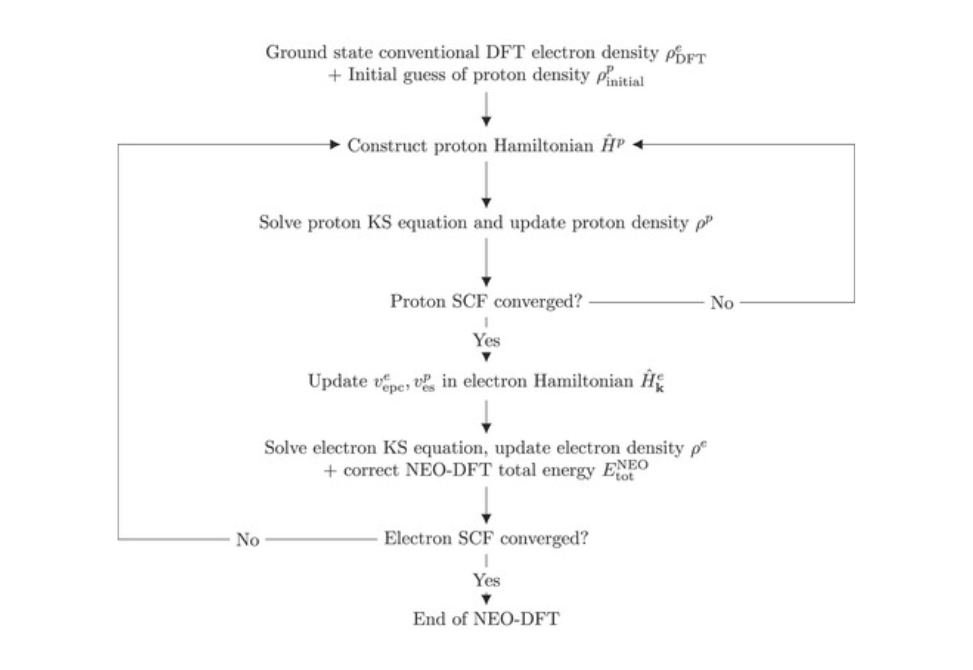Nuclear–electronic orbital approach to quantization of protons in periodic electronic structure calculations
Abstract
The nuclear–electronic orbital (NEO) method is a well-established approach for treating nuclei quantum mechanically in molecular systems beyond the usual Born–Oppenheimer approximation. In this work, we present a strategy to implement the NEO method for periodic electronic structure calculations, particularly focused on multicomponent density functional theory (DFT). The NEO-DFT method is implemented in an all-electron electronic structure code, FHI-aims, using a combination of analytical and numerical integration techniques as well as a resolution of the identity scheme to enhance computational efficiency. After validating this implementation, proof-of-concept applications are presented to illustrate the effects of quantized protons on the physical properties of extended systems, such as two-dimensional materials and liquid–semiconductor interfaces. Specifically, periodic NEO-DFT calculations are performed for a trans-polyacetylene chain, a hydrogen boride sheet, and a titanium oxide–water interface. The zero-point energy effects of the protons as well as electron–proton correlation are shown to noticeably impact the density of states and band structures for these systems. These developments provide a foundation for the application of multicomponent DFT to a wide range of other extended condensed matter systems.
Citation
Xu J, Zhou R, Tao Z, Malbon C, Blum V, Hammes-Schiffer S, Kanai Y. Nuclear-electronic orbital approach to quantization of protons in periodic electronic structure calculations. J Chem Phys. 2022 Jun 14;156(22):224111. doi: 10.1063/5.0088427. PMID: 35705422.


